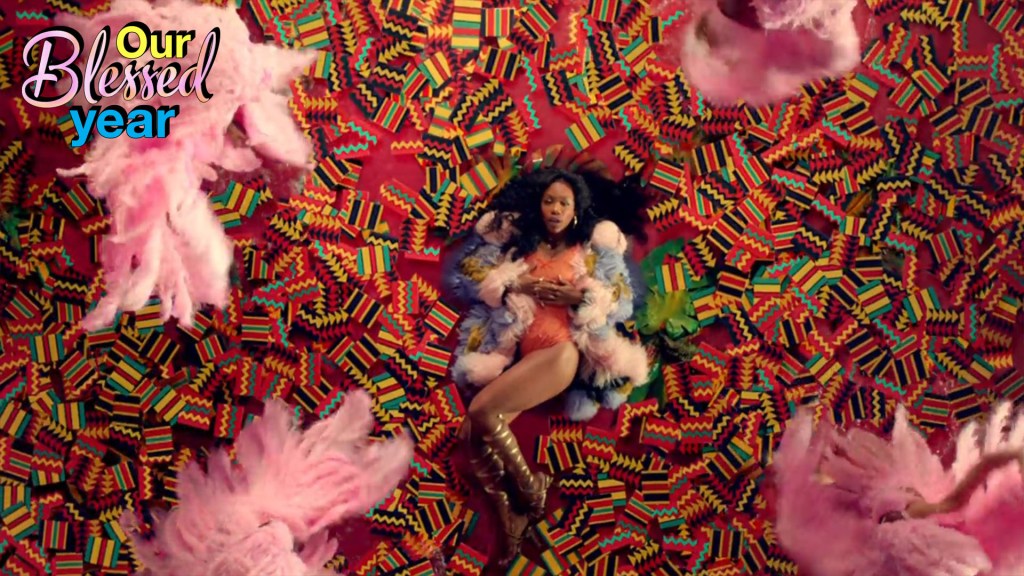The work done by the students of New York University’s prestigious Interactive Telecommunications Program (ITP) never ceases to amaze. The 2016 Spring showcase titled, Experiments in Storytelling, featured over a dozen projects, from VR recreations of The Shining to a rogue AI based two-player escape room, the boundaries of what technology should be used for and how it can function were beautifully shattered into a million ingenious, interactive pieces.

Fragment and Entity, Sehyun Kim
One of the first works I encountered at the show was Sehyun Kim’s Fragment and Entity. Lying somewhere between experiential VR and a video game, the user navigates through a series of visually stunning levels, each filled with shining lights and an array of abstract geometrical shapes that are often reminiscent of celestial bodies. Using different hand motions, the user is able to perform unique interactions with each level’s objects, like pulling spheres toward you and throwing them against other objects and (my personal favorite), manipulating the floor you stand on as if it were made of liquid, an act that makes you feel almost god-like. There is no clear “objective” beyond the experience itself, but that is ultimately more than sufficient.
Videos by VICE

Anxiety Brain, Eve Weinberg
Anxiety Brain by Eve Weinberg is a browser-based, interactive rendition of an anxious artist’s brain (in this case, Weinberg’s own). As you wander around a large virtual room filled with collaged images from the artist’s own Facebook, anxious thoughts are let loose: “Your ideas suck, your projects suck, all your dreams suck,” and “You’ll never find true loooooove!” are sung louder or softer depending on which animated boxes you are in proximity to. The audio 18 compositions within the experience were created by Aaron Montoya-Moraga. Weinberg is considering developing a program that would allow anyone to make their own “anxiety brain” to conquer and therapeutically interact with, in the future.

Quinn exterior, Shaun Axani
The most immersive and arguably most ambitious project at Experiments in Storytelling was Quinn, a “story driven escape room performance” by Shaun Axani along with collaborators Marshall Axani and David Hall. The project, which had its debut earlier this year at the Tribeca Interactive Playground, puts you and a partner inside of a peculiar laboratory where you are tasked with fixing the offline AI system before time runs out. What ends up happening to you in the space is a direct result of your choices; how you interpret the QR Code clues in the room, what you choose to do with the scattered objects and the digital systems in the space, and whether you can do it all in under five minutes. I tried braving the escape room without a partner, a foolish rookie mistake that seemed to spell my doom, until someone (in authentic mad scientist character), came into the lab and to my aid, got us through the complicated puzzles.

Natalia Cabrera and her own Oh Hello
Diverging from the game theme was Oh Hello by Natalia Cabrera. The project is a browser-based landscape, where one can float through cylinder-shaped collections of user-uploaded images, added via webcam or through local files. Meant as a new form of online social interaction, Cabrera plans on creating rooms for groups to privately interact in and she is also working on incorporating GIFs and sound files as part of the media that one can upload through the platform.

Bike ‘The Shining’ Hallway in VR, Nikolaj Slot Petersen
I was incredibly thrilled to end my day riding Nikolaj Slot Petersen’s Bike ‘The Shining’ Hallway in VR. Exactly as the name would lead you to believe, you mount on a red tricycle meant to resemble Danny’s own from Stanley Kubrick’s masterpiece, which you then use to bike down a series of VR hallways fashioned to look like the Overlook Hotel. As you pedal, you move further and further through the virtual space and occasionally encounter recreated iconic moments from The Shining, like the infamous bear and man post-fellatio scene. Inevitably, the ride concludes with a recreation of one of cinema’s creepiest scenes of all time, the twins at the end of the hallway. Petersen’s project beautifully mimics the gore then back-to-normal aspect of the scene, and even concludes with Danny talking to his imaginary friend Tony, a faithful ode to the iconic scene and film.
Click through for more info on the projects included in NYU ITP’s Experiments in Storytelling.
Related:
Assault On The Senses: A Review Of ITP’s 2012 Spring Show
Text Messaging Smart Hoodie Brings A New Meaning To Handsfree
Artist Grows Pollock-Worthy Digital Paintings with an Algorithm



